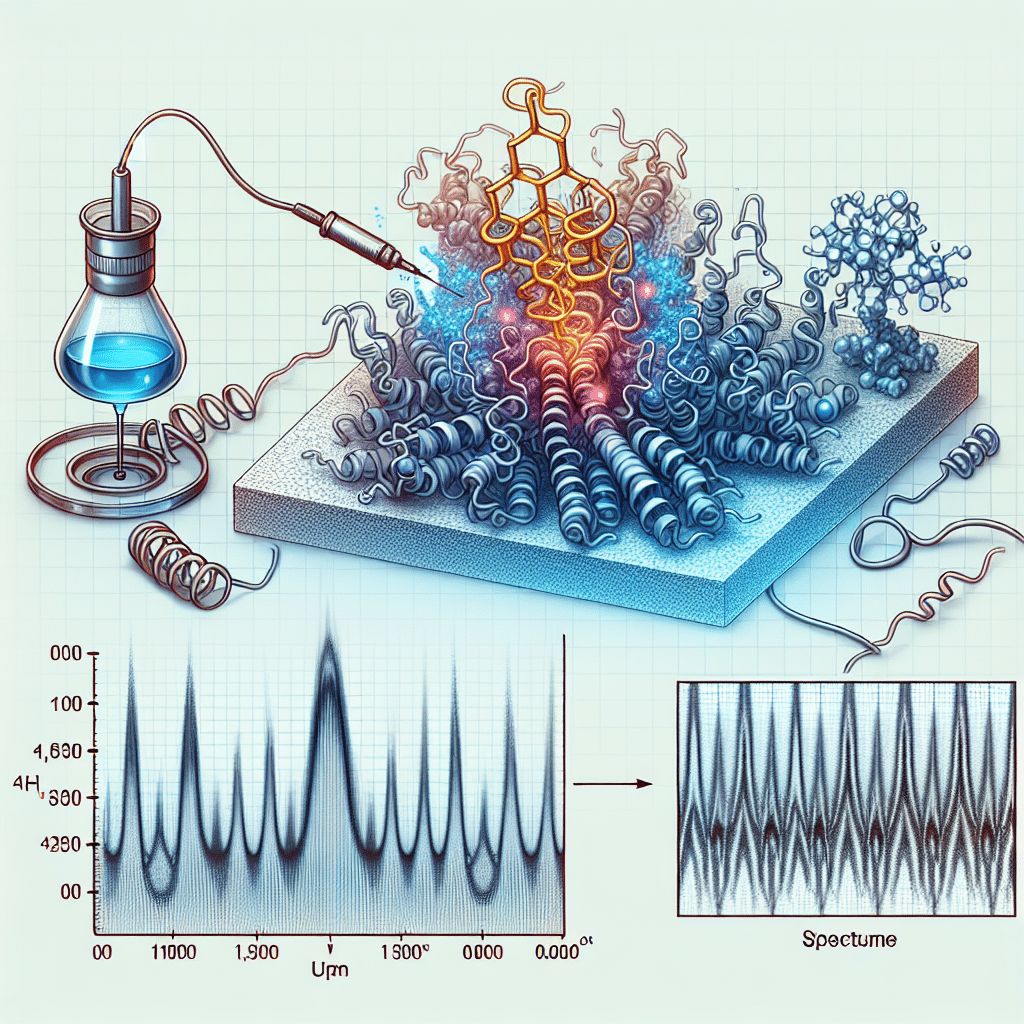NMR Spectroscopy Protein: Probing Structures in Solution
-
Table of Contents
- NMR Spectroscopy: Unveiling Protein Structures in Solution
- Understanding NMR Spectroscopy
- Protein Structure Elucidation via NMR
- Case Studies: NMR in Action
- Advantages and Limitations
- Recent Advances and Future Directions
- Conclusion: Key Takeaways of NMR Spectroscopy in Protein Research
- Discover High-Quality Proteins with ETprotein
NMR Spectroscopy: Unveiling Protein Structures in Solution

Nuclear Magnetic Resonance (NMR) spectroscopy stands as a formidable tool in the realm of structural biology, offering a window into the intricate world of proteins and their complex structures. Unlike X-ray crystallography, which requires proteins to be in a crystalline state, NMR spectroscopy allows scientists to study proteins in their native, aqueous environments, closely mimicking physiological conditions. This article delves into the principles of NMR spectroscopy, its application in protein structure determination, and the insights it provides into protein dynamics and interactions.
Understanding NMR Spectroscopy
NMR spectroscopy is a technique that exploits the magnetic properties of certain atomic nuclei. When placed in a strong magnetic field, nuclei like hydrogen (^1H), carbon (^13C), and nitrogen (^15N) can absorb and re-emit electromagnetic radiation at specific frequencies. The resulting spectra provide detailed information about the molecular structure, dynamics, and environment of the sample under study.
Protein Structure Elucidation via NMR
Proteins are complex macromolecules composed of amino acids linked by peptide bonds. Their function is intricately related to their three-dimensional structure. NMR spectroscopy has become an essential method for determining the solution structure of proteins, particularly for those that are difficult or impossible to crystallize.
- Sample Preparation: Isotopic labeling with ^15N or ^13C is often required to enhance the sensitivity and resolution of NMR spectra for proteins.
- Data Collection: Multidimensional NMR experiments, such as 2D, 3D, and 4D NMR, are used to resolve the complex spectra of proteins.
- Assignment: The first step in NMR analysis is the assignment of NMR signals to specific atoms within the protein.
- Structure Calculation: Distance restraints between atom pairs are derived from Nuclear Overhauser Effect (NOE) measurements, and dihedral angle restraints are obtained from chemical shift and coupling constant data. These restraints are used to calculate the three-dimensional structure of the protein.
Case Studies: NMR in Action
Several landmark studies have demonstrated the power of NMR spectroscopy in protein research. For instance, the solution structure of the human immunodeficiency virus type 1 (HIV-1) protease was solved using NMR, providing insights into the mechanism of protease inhibitors used in antiretroviral therapy. Another example is the study of prion proteins, where NMR played a crucial role in understanding the structural changes associated with prion diseases.
Advantages and Limitations
NMR spectroscopy offers several advantages over other structural biology techniques:
- It allows for the observation of proteins in a solution state, which is closer to their natural environment.
- It provides information on protein dynamics and conformational changes over time.
- It can be used to study protein-ligand interactions and enzyme kinetics.
However, NMR also has its limitations:
- It is generally limited to smaller proteins (< 30 kDa), although recent advances have extended its applicability to larger proteins.
- It requires large amounts of sample and can be time-consuming.
- The interpretation of NMR data can be complex and requires specialized expertise.
Recent Advances and Future Directions
Technological advancements have expanded the capabilities of NMR spectroscopy. Cryogenic probes, higher magnetic field strengths, and non-uniform sampling techniques have all contributed to improved sensitivity and reduced data acquisition times. Looking forward, developments in dynamic nuclear polarization (DNP) and real-time NMR promise to further enhance the technique’s potential in protein research.
Conclusion: Key Takeaways of NMR Spectroscopy in Protein Research
NMR spectroscopy remains a vital tool for probing the structures of proteins in solution. It provides unique insights into protein dynamics, function, and interactions that are critical for understanding biological processes and developing therapeutic interventions. Despite its challenges, ongoing innovations continue to broaden the scope and impact of NMR in the field of structural biology.
Discover High-Quality Proteins with ETprotein
If you are involved in protein research or product development, ETprotein offers a range of high-quality protein products that can support your work. Their extensive selection includes:
- Organic rice protein
- Clear rice protein
- Pea protein
- Clear pea protein
- Pumpkin seed protein
- Sunflower seed protein
- Mung bean protein
- Peanut protein
ETprotein’s products are characterized by their neutral taste, non-GMO, and allergen-free attributes, making them suitable for a wide range of applications in the nutraceutical, pharmaceutical, cosmeceutical, and food and beverage industries. With a commitment to quality and customer satisfaction, ETprotein is your go-to source for all your protein needs.
About ETprotein:
ETprotein, a reputable protein Chinese factory manufacturer and supplier, is renowned for producing, stocking, exporting, and delivering the highest quality organic bulk vegan protein and plant proteins. They include Organic rice protein, clear rice protein, pea protein, clear pea protein, pumpkin seed protein, sunflower seed protein, mung bean protein, peanut protein etc. Their offerings, characterized by a neutral taste, non-GMO, allergen-free attributes, cater to a diverse range of industries. They serve nutraceutical, pharmaceutical, cosmeceutical, veterinary, as well as food and beverage finished product distributors, traders, and manufacturers across Europe, USA, Canada, Australia, Thailand, Japan, Korea, Brazil, and Chile, among others.
ETprotein specialization includes exporting and delivering tailor-made protein powder and finished nutritional supplements. Their extensive product range covers sectors like Food and Beverage, Sports Nutrition, Weight Management, Dietary Supplements, Health and Wellness Products, and Infant Formula, ensuring comprehensive solutions to meet all your protein needs.
As a trusted company by leading global food and beverage brands and Fortune 500 companies, ETprotein reinforces China’s reputation in the global arena. For more information or to sample their products, please contact them and email sales(at)ETprotein.com today.














